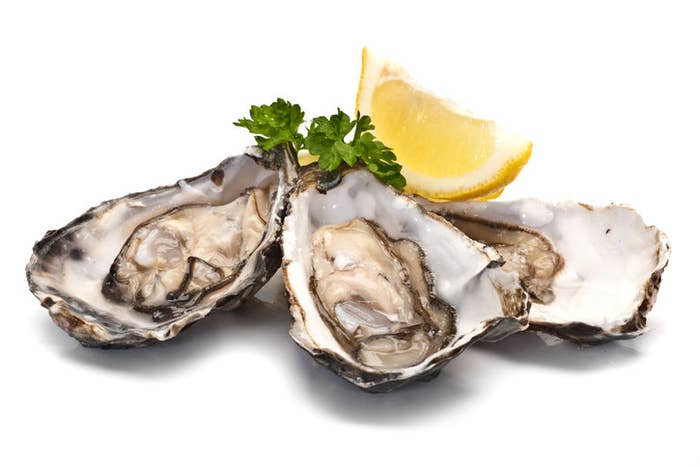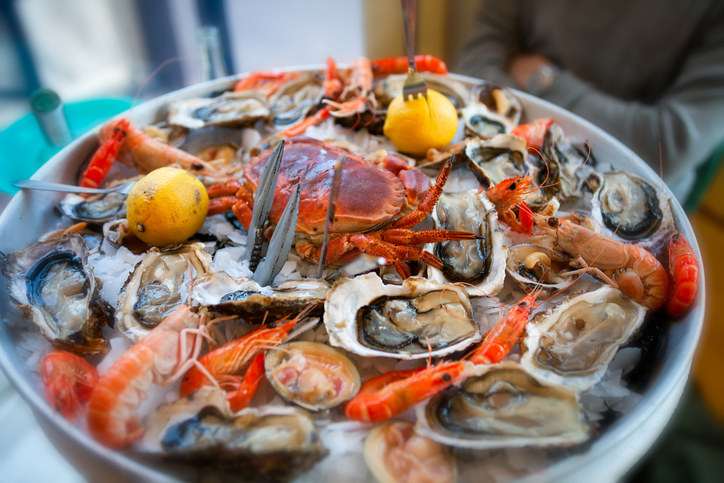A man who ate raw seafood ended up with a serious, fast-moving, and dangerous skin infection.

The patient, who was 71, started having symptoms of fever and severe pain in his hand about 12 hours after eating raw seafood, according to a case report from South Korea published Wednesday in the New England Journal of Medicine (NEJM).
After two days, he went to the emergency department with large blood-filled blisters on his hand, which are known medically as bullae. He had emergency surgery and doctors found he had an infection with Vibrio vulnificus, a germ found in warm oceans or brackish waters, reported Drs. Jin Park and Chang-Seop Lee, of the Chonbuk National University Medical School in Jeonju, South Korea.
Vibrio can contaminate seafood, particularly raw oysters, and can also infect open wounds or cuts exposed to the bacteria in the water.
About 80,000 people each year in the US get vibriosis, an infection from one of about a dozen different types of Vibrio bacteria. Vibrio vulnificus is one of the most serious.
There are about 100 deaths each year in the US due to Vibrio, according to the US Centers for Disease Control and Prevention (CDC), and 15% to 30% of people who get serious Vibrio vulnificus will die of it. Most infections occur in the summer because more people are in the water and the bacteria prefer to grow in warm, salty water.
"One thing to remember is that it’s still a really rare disease," Dr. Karen Wong, a medical officer at the CDC, told BuzzFeed News. "We only see 100 to 200 cases per year, but when they do occur they can be really dramatic and get a lot of attention."
There have been a number of deaths or life-threatening infections in recent weeks that have been caused by the germ, including a man who died in Sarasota, Florida, after eating raw oysters, as well as deaths in Virginia and Texas linked to skin infections. Those cases were in people who had open wounds or cut themselves while fishing.
Last year, a 31-year-old man with chronic liver disease died of Vibrio vulnificus after swimming with a new tattoo.
Most of the time, healthy people who get vibriosis from contaminated seafood will recover in a day or two without treatment. The most common germ that can be found in raw oysters is Vibrio parahaemolyticus, which causes diarrhea, vomiting, and fever.
However, some people are at much higher risk for having complications, and that includes people with weakened immune systems, such as those with HIV or cancer; those with liver or kidney disease; and people with diabetes. Other risk factors include recent stomach surgery and taking stomach acid–suppressing drugs.
"There’s two different types of risk of coming into contact with it — so people who eat raw or undercooked seafood or people who have wounds that might be exposed to ocean or brackish water," said Wong. "And then there’s the type of risks that have to do with your underlying medical conditions."
The patient reported in the NEJM case study was treated with IV antibiotics.

However, the skin infection and blisters progressed to ulcers, and eventually, he had to have an amputation of this left forearm 25 days later, according to the report. He did well after the surgery and went home from the hospital.
The blisterlike lesions aren't unusual for severe Vibrio vulnificus infections, Wong said. "Vibrio does damage the skin and cause these large blisters that fill with blood," she said. "So it’s a pretty dramatic looking infection."
However, she emphasized that these infections are rare. "Even though this is a very severe infection, it is really rare, but there are things people can do to help reduce their risk."
To avoid infections, limit your intake of raw seafood, particularly if you have a medical condition.

As for raw oysters, there isn't any way to eat them with an ironclad guarantee that they won't have Vibrio, Wong said.
"Raw oysters can contain Vibrio year round, no matter where they are harvested from. We do tend to see more cases in warmer months, but they can occur in oysters harvested in places you would think are typically cold, like Alaska or northern Europe," she said. "So really the safest way to eat an oyster is to eat a cooked one."
If you have an open wound, try to avoid swimming in the ocean, if that's possible, or at least wear a waterproof bandage if you do swim, she said.
"You want to be looking for redness, warmth, swelling, pain, and any kind of discharge from the wound," she said. Because the infections can be fast-moving, she recommended getting medical attention quickly, if necessary. "Make sure you tell your health care provider that you’ve been exposed to the water or to seafood or to marine life, if that’s been part of your exposure."
You can get more Vibrio prevention tips on the CDC website.

